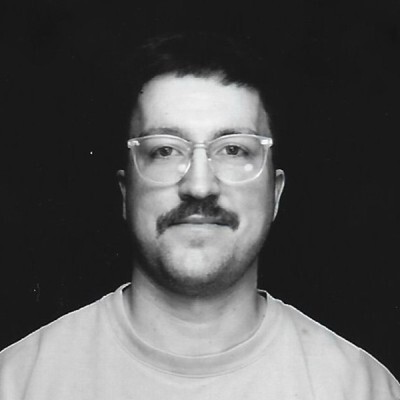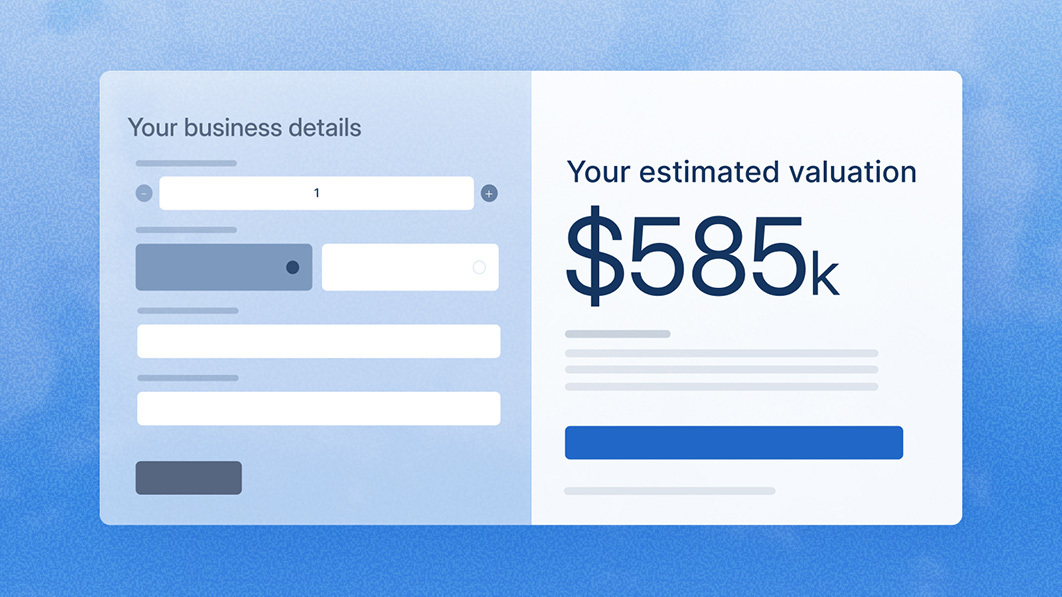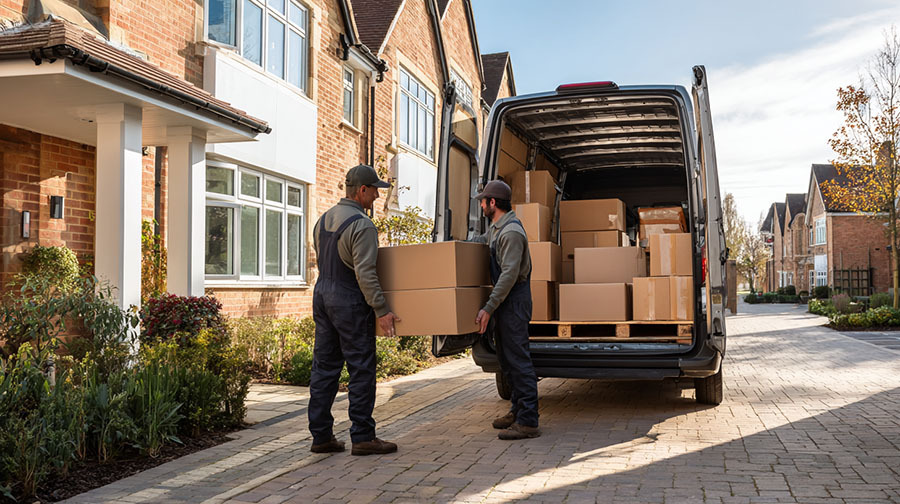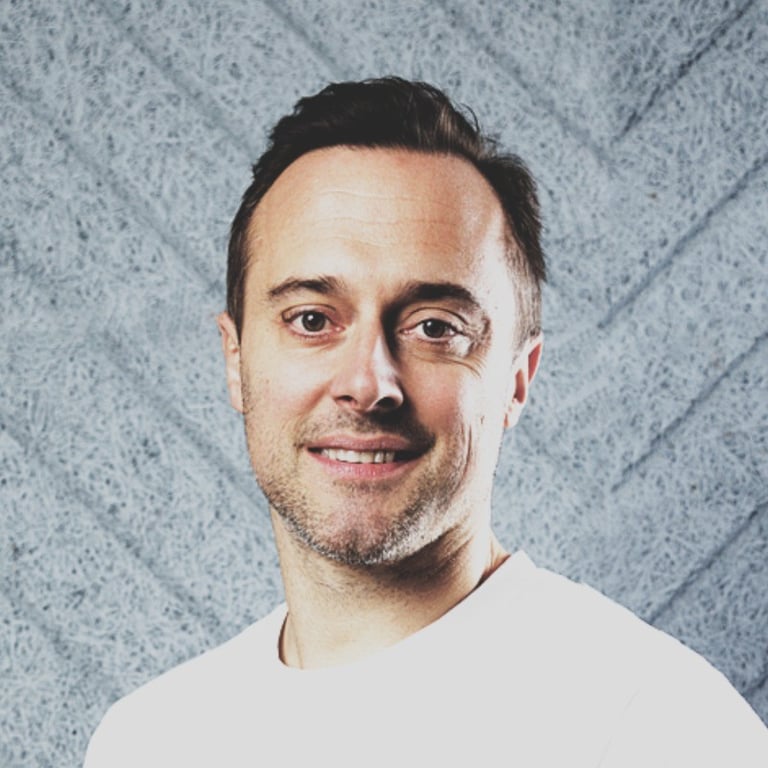Some of the largest storage facilities in the U.S. are making a revenue of up to $4 million per year. If you’re considering starting your own self storage business, there’s a massive opportunity for you to make significant returns.
If you find the right location, choose the best type of storage unit, and nail down your systems, you have a good chance of running a successful business.
However, you need to know how to set up a self storage facility at an affordable price so that you can start making returns as soon as possible.
In this article, we’ll share what you need to consider to develop a self storage facility with 100 units so you can get started today.
How Much Does It Cost to Build a Self Storage Facility?
Source: Freepik
When building a storage facility, the major expenses you’ll face are land and construction costs, so the average cost to start a self storage business will depend on the price of the land you choose, whether you’re going to build a single-story or multi-story facility, and the type of units you’ll use.
As a rough estimate, let’s say you want to start with 100 single-story units and assume an average size of 10’ x 10’ per unit.
This means your total unit space will be 10,000 sq ft. However, you will usually need about 40% more space for driveways, common areas, and parking, which brings the total land size to 14,000 sq ft.
Depending on location, purchasing land will cost between $8 and $25 per square foot, which means your land will cost between $112,000 and $350,000. As a cheaper alternative, you can also consider leasing land.
The cost of the site you choose will depend on:
➡️ It’s location: Choosing a site in a busy or sought-after area will likely cost you more.
➡️ Purpose-built, conversion, or empty land: The cost of buying an existing facility, converting a warehouse into units, or buying an empty site to build your own business will all affect the cost of your site.
According to ProEst, site development costs for building self storage facilities on empty land are usually between $4.25 and $8 per sq. ft., which means preparing your site for construction will cost between $59,500 and $112,000.
➡️ Renting or buying: Renting a site for your storage facility will likely be more affordable in the short term than purchasing a new piece of land. When our CEO, Gavin Shields, started his first storage business, he found that renting a site was more cost-effective than buying one, so he signed up for a 20-year lease to ensure longevity.
Additionally, the cost of your land and location will determine whether you’ll build a single-story or multi-story storage facility.
Single-story storage facilities
The construction costs for a single-story storage facility are about $50 to $65 per square foot, not including land or site improvements. You’ll have to opt for a single-story storage facility if the regulations in your chosen area don’t allow for multi-story buildings.
Multi-story self storage facilities
The construction cost per unit will be more expensive if you build a multi-story storage facility. However, if you’re only buying a small piece of land or want to maximize your layout, consider going the multi-story route.
The cost of building a multi-story storage facility ranges from $85 to $110 per square foot for two stories, excluding the estimates for land and site improvement costs.
Material costs of self storage units
Below are the material costs for 100 storage units:
The Material Costs of Building 100 Units on Empty Land | |
Size of unit | Cost of materials |
100 10’ by 10’ units. | Between $85,000 and $140,000. |
100 10’ by 20’ units. | Between $170,000 and $280,000. |
100 5’ by 10’ units. | Between $42,500 and $70,000. |
Calculating the cost of building 100 storage units
If we bring that all together, then building 100 10’ x 10’ single-story units will cost the following:
14,000 sq ft of land will be between $112,000 and $350,000
Site development costs will be between $59,500 and $112,000
Construction costs will range from $500,000 to $650,000
Material costs will be between $85,000 and $140,000
So, in total, building 100 storage units from scratch will cost between $756,500 and $1,252,000.
If you want to purchase an existing facility rather than build one, you can use our helpful self storage calculator to determine the number of storage units you could purchase and the profit you could make from an initial investment of your choosing. |
The Four Types of Storage Units
Before you start building your storage facility, you must decide what units you want to include:
📦 Purpose-built
Often, you can buy or rent existing purpose-built storage units from a developer or operator to start your own business, but this can be quite expensive—unless the company is struggling financially, in which case you might get a good deal.
📦 Containers or garages
Container storage facilities are made out of shipping containers arranged in a secure setting. The rental space in container storage can be around 40 to 120 square feet. Purchasing a single 20-foot dry container can cost between $1,500 and $3,500.
You can also build garages, also known as lockups, as your storage units. These can range from $7,500 to $15,000 per garage. They are usually smaller than other types of facilities and can be built into residential buildings.
It’s important to note that garages and storage containers can suffer temperature variations and dampness, making them unsuitable for storing certain items, such as clothing.
When Gavin started out, shipping containers seemed attractive because you could simply buy more as your demand grew. However, this meant that anyone could compete with his business in the future. An indoor facility with professional fit-out had much higher upfront costs, but it would make it harder for businesses to compete with his first company.
📦 Converted premises
You can turn an existing residential or commercial building into a self storage facility. You can then use the type of unit you prefer.
One option is to consider purchasing or renting a warehouse and turning it into a storage facility. When Gavin started his storage business, he wanted to buy and convert a warehouse, but he found it too expensive, so he rented one instead.
📦 Self-built
This is when you develop a self storage facility from scratch, which is likely the most expensive option as your construction costs will include everything from the ground up.
However, it can offer greater returns, as you have fewer overheads. It’s also likely that you could sell the site for much more than you bought it for.
Securing Funding for Your Self Storage Units
Source: Freepik
The next step in building your first self storage company is to figure out how you’re going to fund everything. There are three main ways you can do this:
💰 Bootstrapping: This is a method of using your own money, like your savings or revenue from another business, to start your self storage facility. In Gavin’s case, he sold shares in a company to start his first storage company.
💰 Loans: You could secure a loan from a financial institution to build your first 100 units. Before taking out a loan, you’ll need to know exactly how much everything will cost to ensure you borrow enough to cover everything.
💰 Venture capital: This is a form of private equity investors provide to startups and small businesses. In exchange for funding, venture capitalists typically receive equity in the company. This is ideal if you want to build a larger storage business.
For loans and venture capital, you’d need a concrete business plan to prove how your storage facility will be profitable.
Finding the Right Location for Your Storage Business
Source: Freepik
The location of your new storage facility is crucial. You want to choose an area where there is a market, but you don’t want to choose a location that’s already saturated by other storage facilities.
Here was Gavin’s process in choosing a location for his first self storage business:
Map it out: Map out every storage facility in the target area. Gavin started by pinpointing all the storage facilities in Northern Ireland and identified towns with no existing facilities within a three-mile radius.
Find data: Gavin used census data and ruled out locations with less than 15,000 residents. If the area you choose is too small, your chances of securing enough customers to run a profitable business are lower.
Choose somewhere close to where you live: Gavin wanted to choose a location within a 30-minute drive of where he lived. You’ll want to be able to easily visit your site as the building process progresses so you can monitor everything.
Look for a busy location: It’s essential that your facility has easy access and enough passing traffic to increase awareness of your business. Gavin chose a site that was highly visible, along a busy road, and about 500 meters from the town center.
Choose Your Systems
Source: Freepik
Now, you’ll need to consider the costs of fitting out your units with the necessary features and access systems and how to secure your facilities.
Building features
When considering the cost of building your facility, there’s more to it than just creating units. You must also consider aspects like lighting, insulation, and climate control.
Let’s look at some of these costs:
👉 Lighting: Installing basic LED lighting in storage units typically costs between $2 to $24 per square foot. For more energy-efficient solutions like motion-activated LED lighting can range from $4 to $8 per square foot.
👉 Insulation: Standard insulation materials like fiberglass batts can cost up to $1.50 per square foot, and higher-grade insulation can cost up to $3.50 per square foot.
👉 Climate control: Installing basic heating, ventilation, and conditioning (HVAC) systems typically costs around $1,000 per unit, translating to $100,000 for 100 units.
Access systems
If you’re going to use physical keys and locks for access control in your storage facility, you can expect to spend between $50 and $2,400 per door.
Keypad entry systems range from $500 to over $1,500 per door, and hardware must be installed outside the building.
Buzzer, telephone, or video intercom access control systems vary in price. A basic system costs around $750 per door, and high-quality video access control can cost up to $10,000.
Smartphone access control systems typically start at around $500 per door, but these costs can vary significantly depending on the type of access.
Security systems
The price of security for your storage facility will depend on the type of system you choose:
🔒 Video surveillance: Each camera you install can range from $100 to $300.
🔒 Motion sensors: Most facilities need four to eight motion systems, costing between $30 and $100.
🔒 Alarm system: The initial costs to install and wire sensors for monitoring are usually between $500 and $1,500.
🔒 Fencing: Costs for fencing can range from $10 to $30 per linear foot.
Online admin
Another aspect you must consider is the cost of the platforms you’ll use to manage your facility, including your website, recurring payments system, and online bookings.
At Stora, our pricing for automated invoicing, recurring payments, a booking portal, automated customer check-ins, and a self storage website range from $159 to $249 per month.
Consider Your Returns
Source: Freepik
We understand that you’ll likely want to start small when building your first self storage facility, which is why we’ve given you cost estimates based on your first 100 units.
The size of your storage facility will affect your returns—while a smaller facility has lower construction costs, it may not be the most cost-effective option.
Even after construction, you’ll still have to pay fixed costs. Limited revenue can delay profitability and reduce your overall return if your facility is too small. You need to calculate your return on investment (ROI) before you choose the size of your facility.
Follow the steps below to calculate your ROI for your storage facility. Keep in mind that your ROI will depend on your occupancy rate, and there’s no guarantee that all 100 of your units will be booked. Please note that the calculations below are based on assumptions, and you will need to use the actual figures involved in developing your facility to calculate your returns.
💲 Step 1: Gross income (revenue)
First, you need to calculate your gross income from your 100-unit storage facility. Let’s say your occupancy rate is 90%, meaning that 90 of your 100 units are rented out.
For this example, let’s assume that each unit rents for $150 per month.
This is the formula you should use: Occupied units x Rent per unit. In this example, your formula would look like this:
Monthly gross income = 90 units x $150/unit = $13,500
💲 Step 2: Operating expenses
You must deduct operating expenses from the gross income to get your net income. Common expenses include:
Mortgage payments
Assume the storage facility costs $1,000,0000 to build. If you put 20% down ($200,000) and financed the remaining $800,000 over 20 years at a 5% interest rate, your monthly payment would be approximately $5,280.
Property taxes
You can estimate your annual property taxes at 1.5% of the property value. You can calculate your property taxes using the following formula:
Property taxes = $1,000,000 x 0.015 = $15,000 annually, or $1,250 monthly.
Maintenance and repairs
You should allocate around 5% of your gross income for maintaining your facility. Here’s the formula you would need to use:
Monthly maintenance = $13,500 x 0.05 = $675.
Utilities
For this example, let’s say your utilities cost $500 per month.
Staffing or management fees
Let’s say hiring a property manager costs around 5% of your gross income. Your formula would be:
Monthly management fees = $13,500 x 0.05 = $675
Marketing and other expenses
Let’s assume your marketing and administrative costs are $200 per month.
💲 Step 3: Total monthly and annual operating expenses
Let’s assume these are your operating expenses per month:
Mortgage: $5,280 per month.
Property taxes: $1,250 per month.
Insurance: $333 per month.
Maintenance and repairs: $675 per month.
Utilities: $500 per month.
Staffing or management: $675 per month.
Marketing: $200 per month.
By adding these up, your total monthly expenses are $8,913, and your total annual expenses would be $106,956.
💲 Step 4: Net Income
This is the formula to use to calculate your monthly or annual net income:
Gross monthly income - total monthly expenses = $13,500 – $8,913 = $4,587
Annual net income - Total annual expenses = $162,000 – $106,956 = $55,044
💲 Step 5: Initial investment
Here are the formulas for calculating your initial investment:
Down payment: 20% of $1,000,000 = $200,000
Closing costs and fees: Estimate around 3% of the purchase price = $30,000
Initial Investment = Down payment + Closing costs = $200,000 + $30,000 = $230,000
💲 Step 6: Calculating ROI
Here’s the formula for calculating your ROI:
ROI = (gross return - total cost) / total cost
Since we’re calculating for one year, the total cost is the total annual expenses, including the mortgage and operating costs, which are $106,956.
For this example, your annual ROI would be: ROI = (($162,000 - $106,956) / $106 956)*100 = 51.47%
You can use our calculator for building container and indoor storage facilities to work out your annual return based on your initial investment.
Maintain an Affordable Storage Facility with Stora
Setting up the first 100 units for your self storage facility can be expensive, and there are plenty of factors to consider when starting out.
Investing in software like Stora can be a great way to save money, ensure your business runs smoothly, and increase unit bookings, which can help you start seeing returns right away.
Our system enables online rentals and automated payments, which can reduce labor costs and streamline your processes. It also makes it easier for customers to pay bills directly through the platform.
We also offer automated billing, reminders, and software to help your access control communicate with your online bookings, allowing operators to manage their facilities more efficiently without spending extra money and resources on these factors.
By automating your self storage facility with Stora, you can reduce operational costs, enhance the customer experience, and maximize revenue. Visit our website to book a Stora demo to see how our solution can help you save money and automate your business.









